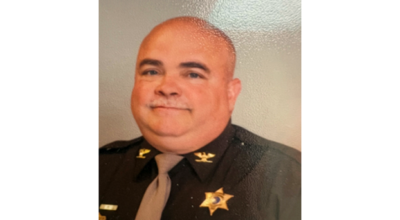‘Spirit’ of Knauf honored at ceremony
Published 4:40 pm Sunday, December 5, 2010
For the United States Army and Air Force, the C-17 air cargo aircraft is essential.
It is what has been called one of the armed forces’ “most reliable” planes.
These days, it is a backdrop for “hands on” training done by thousands of soldiers from both military branches in the loading and unloading of cargo.
And now, one bares a name with a Niles connection.
Last month, an unveiling for a specialized Boeing C-17 training aircraft, the S-1, at the U.S. Army Transportation School in Fort Lee, Va. celebrated the life and the legacy of Steve Knauf.
Knauf, the senior manager of the design engineering department which was instrumental in the development of the testing and qualification of the structure of the aircraft, died of cancer in 1999.
“After successfully completing this effort, Steve went on to chair the C-17 configuration control board, where he authorized many new capabilities that has maintained the C-17 as the most technically advanced airlifter in the world,” read a statement in the program from the unveiling ceremony.
Steve’s father Ray Knauf, a longtime Niles resident, made the trip to Virginia for the ceremony.
“It was the most wonderful thing you ever saw,” Knauf said.
The fuselage of the aircraft was adorned with an artists rendering of holding the plane together, with the words “structural testing” printed underneath.
“The Spirit of Steve Knauf,” the name for the fuselage that will serve as a training tool for many soldiers, joins other C-17 structures including “The Spirit of Bob Hope” and “The Spirit of Ronald Reagan.”
Those names serving as a testament to the prestige of the event, Knauf said Boeing and the armed forces together, “honored my son.”
Before joining the team at Boeing, Steve was a member of the U.S. Navy. His career at Boeing lasted nearly 20 years, according to Knauf, who added, “I guess you could say he worked himself up pretty good.”
Friend and colleague Andy Harber was responsible for suggesting the test aircraft be named after Steve who, he called in his proposal to officials, was a “very talented leader.”
Also in his proposal, Harber described Knauf as being respected by others for “his integrity and tenacity.”
Knauf said he had never “in the slightest” expected his son’s name to be placed on the body of the aircraft.
“We didn’t even have an idea,” he said.
In 1999, at age 46, Steve lost his battle with cancer.
Now, 11 years later, his family, his colleagues and the men and women of the U.S. military have something tangible to remember him by.
And the picture that accompanies his name, on the C-17 in Virginia, carries a special symbolism. The picture of two hands holding either end of the aircraft.
“He was responsible for keeping (the plane) together,” Knauf said of his son. “So it didn’t fall apart.”






